Zhi shi – Narenciye aurantium
[Medicinal use] Young fruits of Citrus aurantium L. and its variants or sweet orange C. sinensis Osbeck.
[Nature and flavor and meridians] Bitter, slightly cold. Enters the spleen, stomach, and large intestine meridians.
[Effects] Promotes qi and relieves distension, resolves phlegm and relieves numbness, eliminates accumulation and relieves stagnation.
[Clinical application] 1. Used for chest and abdominal distension
Citrus aurantium has a strong effect of regulating qi and promoting qi, so it is generally believed that this product has the effect of breaking qi, promoting qi stagnation and relieving distension. It is used for chest and abdominal distension, and is often used together with costus root and orange peel. In addition, for those with indigestion and abdominal distension, it can be used with Shan Zao and Shen Qu; for those with spleen deficiency and abdominal distension, it is often used with Bai Zhu; for those who are tired after illness, have fever, and have a stuffy feeling under the heart, it can be used with Gardenia and Douchi; for those with stomach pain due to cold stagnation and qi stagnation, it can be used with tangerine peel and ginger.
2. It is used for chest obstruction, cough with excessive phlegm, dizziness due to wind phlegm, etc.
This product can both regulate qi and resolve phlegm. It can be used with Trichosanthes, Allium macrostemon, and Cinnamon Twig for phlegm-dampness blocking chest yang, chest yang deficiency, and chest pain; it can be used with Coptis chinensis and Trichosanthes for phlegm-heat stagnation and chest pain; it can be used with Tangerine Peel, Pinellia, and Gastrodia for phlegm-excess cough, dizziness due to wind phlegm, etc.
3. It is used for food stagnation, constipation and abdominal pain, diarrhea, and tenesmus.
Zhishi is bitter and descends downward, and has the function of eliminating stagnation and removing stagnation. It is used to treat constipation and abdominal pain, and is often used in combination with rhubarb, magnolia bark, etc.; it is often used in combination with costus root, betel nut, etc. to treat heaviness after diarrhea.
In addition, this product can also be used for gastroptosis, rectal prolapse, uterine prolapse, etc., and it is suitable to be used with products that replenish qi and generate yang; in recent years, it has been found that this product has a pressor effect and can be used for shock.
[Prescription name] Zhishi, Jiang Zhishi, raw Zhishi (raw effect is more intense), stir-fried Zhishi (stir-fry the bran until it is burnt)
Zhishi charcoal (stir-fry until the outside is burnt black)
[Genel dozaj ve kullanım] Bir ila üç adet kaynatılıp içilir.
[Attached medicine] Zhike: mature fruits of plants such as Citrus aurantium and Citrus aurantium of the family Citrus. The nature, taste and efficacy are similar to Zhishi, but the effect is weak and slow, mainly promoting qi and eliminating distension, suitable for chest and flank distension and pain, and abdominal distension. The general dosage is one to three qian, decocted and taken orally.
[Comments] 1. Zhishi is bitter and slightly cold, and enters the spleen, stomach, and large intestine meridians. It has a strong bitter and purgative effect and a strong qi-moving effect, so it is a medicine for breaking qi. It is sinking and descending, and its function is to regulate qi and eliminate stagnation, so as to eliminate chest and abdominal distension, and it can also resolve phlegm to open numbness, eliminate accumulation to guide stagnation. It is a strong medicine for breaking qi stagnation, and a key medicine for treating stagnation and stagnation. It also has the ability to increase blood pressure and is used to treat yin prolapse and anal prolapse.
2. Zhishi and Zhike are both fruits, and they are distinguished by age. The effects of the two are similar, but Zhishi is strong and Zhike is slow. Zhishi is often used to break qi and eliminate stagnation, eliminate accumulation and guide stagnation; Zhike is often used to regulate qi, relieve bloating, and eliminate fullness.
3. Magnolia officinalis and Citrus aurantium are often used together to relieve qi stagnation, but Magnolia officinalis is bitter and pungent in nature, has a slow qi-moving effect, is good at drying dampness and dispersing fullness, and can relieve asthma; Citrus aurantium is bitter and cold in nature, has a strong qi-breaking effect, is good at resolving phlegm and removing lumps, and has the effect of removing accumulation and stagnation.
[Example of prescription] Citrus aurantium and stagnation pills (“Discussion on Internal and External Injuries”): Citrus aurantium, Atractylodes macrocephala, Scutellaria baicalensis, Alisma orientalis, Poria cocos, Rhubarb, and Six-curve. Treats damp-heat in the spleen and stomach, chest tightness and abdominal pain, and diarrhea caused by accumulation.
Citrus aurantium pills (“Discussion on Internal and External Injuries”): Citrus aurantium, Atractylodes macrocephala. Treats spleen and stomach deficiency, weak transportation and transformation, and abdominal distension and distension after eating.
Xiaojiexiong Jia Citrus aurantium soup (“Discussion on Warm Diseases”): Coptis chinensis, Trichosanthes kirilowii, Citrus aurantium. Treats Yangming summer heat, water accumulation in the chest, red face, hot body, dizziness, thirst for cold drinks, vomiting after drinking water, pain under the chest when pressed.
Daotan Decoction (Jisheng Fang): Pinellia, Tangerine Peel, Citrus Aurantium, Poria, Licorice, Ginseng, Polygala, Ziziphus Jujuba, Schisandrae Chinensis, Rehmannia. Treats timidity, shortness of breath, fatigue, restlessness, insomnia, palpitations or madness, etc.
[Literature Excerpt] “Ben Cao Yan Yi”: “Zhi Shi and Zhi Ke are the same thing. When they are small, they are harsh and fast, and when they are large, they are gentle and slow.”
“Compendium of Materia Medica”: “Zhi is the name of a tree, and Zhi Shi is its seed, so it is called Zhi Shi. Later generations called the old one Zhi Ke because the small one is fast. When it is raw, the skin is thick and solid, and when it is ripe, the shell is thin and hollow, just like the meaning of green orange peel and old orange peel. The Song people re-examined Zhi Ke, which is wrong. Kou thought that it was named after the fruit that was broken, but it is not necessarily true.”
In May and June, collect the fallen fruits, remove impurities, and cut them horizontally from the middle. This product is the dried young fruit of the Rutaceae plant sour orange Citrus aurantium L, and its cultivated varieties or sweet orange Citrus sinensis Osbeck.
Cut into two halves, sun-dry or low-temperature dry, and the smaller ones can be directly sun-dried or low-temperature dried.
【Özellikler】
This product is hemispherical, a few are spherical, with a diameter of 0.5~2.5cm. The outer peel is black-green or brown-brown, with granular protrusions and wrinkles, and obvious style remnants or fruit stalk marks. The mesocarp is slightly raised on the cut surface, 0.3~1.2cm thick, yellow-white or yellow-brown, with 1~2 rows of oil chambers on the edge, and the capsule is brown-brown. The texture is hard. The smell is fresh and the taste is bitter and slightly sour.
【Tanılama】
(1) The powder of this product is light yellow or brown-yellow. The mesocarp cells are round or irregular in shape, and the walls are mostly unevenly thickened. The epidermal cells of the peel are polygonal, square or rectangular in surface view, with a ring-shaped stomata of 18~26um in diameter, and 5~9 accessory cells: the outer cuticle is observed from the side. The calcophenolate is present in the peel and juice sac cells, and is rhombic, polyhedral or biconical in shape, with a diameter of 2~24um. Hesperidin crystals exist in thin-walled cells, yellow or colorless, in round or amorphous masses, some with radial textures. Oil chamber fragments are common, and secretory cells are narrow and curved. Spiral vessels, reticular vessels and tracheids are small.
(2) Take 0.5g of this product powder, add 10ml of methanol, ultrasonically treat for 20 minutes, filter, evaporate the filtrate to dryness, add 0.5ml of methanol to the residue to dissolve it, and use it as the test solution. Take another synephrine reference substance, add methanol to make a solution containing 0.5mg per 1ml, and use it as the reference solution. According to the thin layer chromatography method (General Rule 0502), take 2ul of each of the above two solutions and spot them on the same tridacna G thin layer plate, use the upper layer solution of n-butyl alcohol-glacial acetic acid-water (4:1:5) as the developing agent, develop, take out, dry, spray with 0.5% ninhydrin ethanol solution, and heat at 105℃ until the spots are clearly colored. In the chromatogram of the test sample, spots of the same color appear at the corresponding positions of the chromatogram of the reference sample.
[Denetleme]
The water content shall not exceed 15.0% (General Rule 0832 Method 4).
Toplam kül içeriği 7.0%'yi (Genel Kural 2302) aşmamalıdır.
[Çıkarmak]
Determine by hot leaching method under the alcohol-soluble extract determination method (General Rule 2201), using 70% ethanol as solvent, and shall not be less than 12.0%
[İçerik belirleme]
Yüksek performanslı sıvı kromatografisi (Genel Kural 0512) ile belirleyin.
Chromatographic conditions and system suitability test Octadecylsilane bonded silica gel is used as filler; methanol-potassium dihydrogen phosphate solution (take 0.6g potassium dihydrogen phosphate, 1.0g sodium dodecyl sulfonate, 1ml glacial acetic acid, add water to dissolve and dilute to 1000ml) (50:50) is used as mobile phase; the detection wavelength is 275nm. The number of theoretical plates calculated based on the synephrine peak should not be less than 2000.
Preparation of reference solution Take an appropriate amount of synephrine reference and weigh it accurately. Add water to make a solution containing 30ug per 1ml.
Preparation of test solution Take about 1g of the powder of this product, weigh it accurately, put it in a stoppered conical flask, accurately add 50ml of methanol, weigh it, heat and reflux for 1.5 hours, cool it, weigh it again, make up the lost weight with methanol, shake it well, filter it, accurately measure 10ml of the filtrate, evaporate it to dryness, add 10ml of water to the residue (to dissolve it, pass it through a polyamide column (60~90 mesh, 2.5q, inner diameter 1.5cm, dry column), elute it with 25ml of water, collect the eluate, transfer it to a 25ml volumetric flask, add water to the scale, shake it, and you are done.
Determination method: accurately aspirate 10~20u of the reference solution and the test solution respectively, inject it into the liquid chromatograph, and determine it.
This product, calculated on the basis of the dry product, contains not less than 0.30% synephrine (CgH13NO,).
Kaynatma parçası
[İşleme]
Zhi Shi Remove impurities, wash, moisten thoroughly, slice thinly, and dry.
[Properties] This product is in irregular arc-shaped strips or round thin slices. The cut surface of the outer peel is black-green or brown-brown, the middle peel is yellow-white to yellow-brown, there are 1 to 2 rows of dot-shaped oil chambers near the outer edge, and there are brown-brown pulp capsules on the inner side of the strip or in the center of the round slice. The smell is fresh and fragrant, and the taste is bitter and slightly sour.
[Identification] [Inspection] [Extract] [Content determination] Same as the medicinal material.
Fried Zhishi with bran Take Zhishi slices and stir-fry them according to the bran stir-fry method (General Rule 0213) until the color becomes darker.
[Properties] This product is shaped like Zhishi slices, with a darker color, and some have burnt spots. The smell is burnt and the taste is slightly bitter and slightly sour.
[Inspection] Water content Same as the medicinal material, not more than 10.0%.
[Kimlik] [Denetim]
(Toplam kül)
[Content determination] Same as the medicinal material.
[Properties and meridians) Bitter, pungent, sour, slightly cold. It belongs to the spleen and stomach meridians.
[Fonksiyonlar ve endikasyonlar]
It can break up qi and eliminate stagnation, resolve phlegm and relieve lumps. It is used for stagnation of internal stagnation, fullness and pain, heaviness after diarrhea, constipation, phlegm stagnation and qi obstruction, chest pain, chest congestion, and sagging organs.
[Kullanım ve dozaj]
3~10 gr.
[Not]
Hamilelerin dikkatli kullanması gerekir.
[Depolamak]
Place in a cool and dry place to prevent moths.
Note: The cultivated varieties are the same as Citrus aurantium.
Where is the main origin of Citrus aurantium?
It is mainly produced in Sichuan, Jiangxi, Hunan, Hubei, and Jiangsu.
Where is the main medicinal part of Citrus aurantium?
Medicinal parts of Citrus aurantium:
This product is the dried young fruit of Citrus aurantium L. and its cultivated varieties or Citrus sinensis Osbeck, a plant of the Rutaceae family. The fallen fruits are collected in May and June, impurities are removed, and they are cut into two halves from the middle, and dried in the sun or at low temperature. The smaller ones are directly dried in the sun or at low temperature. Characteristics of the medicinal parts of Zhishi:
This product is hemispherical, a few are spherical, with a diameter of 0.5~2.5cm. The outer peel is black-green or brown, with granular protrusions and wrinkles, and obvious style remnants or fruit stalk marks.
The peel is slightly raised in the cut surface, 0.3~1.2cm thick, yellow-white or yellow-brown, with 1~2 rows of oil chambers on the edge, and the capsule is brown-brown. The texture is hard. The smell is fresh, bitter, and slightly sour.
How are Zhishi recorded in historical books?
“Shennong’s Herbal Classic”: “It is used to treat strong wind in the skin, such as hemp beans, bitter and itchy, eliminate cold and heat, stop dysentery, grow muscles, benefit the five internal organs, and benefit the body.
“Famous Doctors’ Records”: “It can eliminate chest and flank phlegm, expel stagnant water, break up solidity, eliminate fullness, acute pain under the heart, and reverse qi. It can relieve flank wind pain and calm the stomach. It can stop loose stools and improve eyesight.
“Compendium of Materia Medica”: “The effects of Jishi and Jike are generally to promote qi. When qi descends, phlegm and wheezing stop, when qi moves, phlegm and fullness disappear, when qi is unblocked, pain and stabbing stop, and when qi is unblocked, heaviness in the back is eliminated.
“Compendium of Materia Medica Yanyi Buyi”: “Zhishi can purge phlegm, and it is a medicine that can break through walls and purge qi.
Etkileri
Zhishi has the effects of breaking qi and eliminating accumulation, resolving phlegm and dispersing lumps.
What are the main effects and clinical applications of Zhishi?
Zhishi is used for stagnation of internal accumulation, fullness and pain, heaviness after diarrhea, constipation, phlegm stagnation and qi obstruction, chest pain, chest congestion, and sagging of internal organs.
Gastrointestinal qi stagnation syndrome
It can be used together with Shenqu, rhubarb, and Baizhu to treat food stagnation, damp-heat accumulation, abdominal distension, diarrhea or constipation..
It can be used together with rhubarb, mirabilite, and magnolia bark to treat constipation due to heat accumulation and abdominal distension and pain. .
Chest obstruction
Combined with Xiebai, Gualou, etc. Treats chest obstruction caused by phlegm and turbidity, chest obstruction caused by qi stagnation in the chest, chest fullness and pain, often with Guizhi, treats phlegm and heat in the chest, chest fullness, often with Huanglian, Gualou, and Pinellia.
What other effects does Zhishi have?
In my country’s traditional food culture, some Chinese medicinal materials are often widely consumed as food ingredients among the people, that is, substances that are both food and Chinese medicinal materials according to tradition (i.e. edible medicinal substances). According to the documents issued by the National Health Commission and the State Administration for Market Regulation, Zhishi can be used as both medicine and food within a limited range of use and dosage.
Common Zhishi medicinal diet recipes are as follows:
Strengthening the spleen and replenishing qi
·250 grams of beef tripe, 12 grams of Jishi, 2 grams of Amomum villosum, and appropriate amount of salt.
·Wash the beef tripe and cut it into strips for later use. Add appropriate amount of water to the pot, put Amomum villosum, Zhishi and beef tripe, boil on high heat, then turn to low heat and continue for about 2 hours. Add appropriate amount of salt to taste when eating.
Intestinal moistening and laxative
· 10 grams of Zhishi, white radish, dried shrimp, vegetable oil, onion, ginger, and salt.
· Decoction of Zhishi in water, filter the residue and set aside; wash the white radish and cut into pieces; wash and cut onion and ginger into shreds. Add appropriate amount of oil to the pot and heat it, add dried shrimp and radish and stir-fry for a while, pour in the juice, and simmer until very soft. Add onion, ginger, and salt to taste.
Note: The use of Chinese medicinal materials must be based on syndrome differentiation and treatment. It should be used under the guidance of professional Chinese medicine practitioners. It should not be used at will, and it is even more forbidden to listen to Chinese medicine prescriptions and advertisements at will.
What are the compound preparations containing Zhishi?
Zhishu Hapları
Strengthen the spleen and digest food, promote qi and eliminate dampness. It is used for weak spleen and stomach, poor digestion, and fullness in the abdomen. Zhishi Daozhi Pills
Dissipate accumulation and stagnation, clear dampness and heat. Used for abdominal distension and pain, loss of appetite, constipation, dysentery and tenesmus caused by food stagnation and damp-heat internal obstruction.
Xiangsha Zhishu Hapları
Strengthen the spleen and appetite, promote qi circulation and eliminate. Used for spleen deficiency and qi stagnation, abdominal distension, loss of appetite, and soft stools.
Jianpi Pills
Strengthen the spleen and appetite. Used for spleen and stomach weakness, abdominal distension, poor appetite and loose stools.
Dachengqi Decoction
Pungent purgative heat. Indications: Yangming Fu Shi syndrome, constipation, frequent flatulence, abdominal distension, abdominal pain that refuses to be pressed, hardness when pressed, or even hot flashes and delirium, sweating of hands and feet, yellow dry and thorny tongue coating, or burnt black and dry cracked, deep and solid pulse; heat accumulation and side flow syndrome, clear watery diarrhea, pure blue color, foul smell, umbilical and abdominal pain, hardness and lumps when pressed, dry mouth and tongue, slippery and solid pulse; heat, spasm or madness of internal heat syndrome.
Xiao Chengqi Decoction
Lightly relieves heat accumulation. Indications: Yangming Fu Shi syndrome. Constipation, hot flashes, delirium, abdominal distension: or the initial onset of dysentery, abdominal distension and pain, tenesmus.
Zhishi Shaoyao San
Promotes qi and blood circulation, relieves urgency and relieves pain. Indications: Qi and blood stagnation syndrome. Postpartum abdominal pain, fullness and distension. Also treats carbuncle. Zhishi Xiebai Guizhi Decoction
Promotes yang and dissolves accumulation, removes phlegm and lowers qi. Chest pain caused by weak chest yang and accumulation of phlegm and qi. Chest fullness and pain, or even chest pain that penetrates the back, wheezing, coughing and spitting, shortness of breath, qi rushing from the ribs and attacking the heart and chest, or cold damage to Yangming Taiyin syndrome, white and greasy tongue, deep and stringy or tight pulse.
Modern research progress on Zhishi
Modern research results show that this product has multiple pharmacological effects such as regulating gastrointestinal motility, anti-ulcer, gallbladder, raising blood pressure, strengthening the heart, relieving pain, increasing coronary, brain and kidney blood flow, inhibiting or exciting the uterus, etc.
Hastaların en sık sorduğu sorular
The efficacy and effects of bran-fried Citrus aurantium
The nature and flavor of Citrus aurantium is bitter, pungent, sour, and warm. It enters the spleen and stomach meridians. It has the functions of breaking qi and eliminating accumulation, resolving phlegm and dispersing lumps.
The raw product is more intense and is good at breaking qi and resolving phlegm. It is used for chest pain caused by phlegm stagnation and qi obstruction, cough and asthma caused by phlegm and fluid, and dizziness: it has also been used for gastroptosis in recent years.
After frying, it can alleviate the strong effect and is good at eliminating accumulation and resolving lumps. It is used for food accumulation, stomach fullness, stagnation, constipation, and damp-heat dysentery.
The efficacy and indications of Citrus aurantium and dredge pills
Citrus aurantium and dredge pills are composed of Citrus aurantium (fried), rhubarb, coptis (fried with ginger juice), scutellaria, atractylodes (fried), poria, orientalis, and six-shenqu (fried).
It has the effects of eliminating accumulation and stagnation, clearing away dampness and heat.
It is used for abdominal distension and pain caused by food stagnation and internal dampness and heat, loss of appetite, constipation, and dysentery.
Efficacy of Zhishi Zhizi Shi Tang
Zhishi Zhizi Shi Tang is a heat-clearing agent. It has the effects of clearing heat and eliminating restlessness, widening the middle and promoting qi.
It is mainly used for patients who have recovered from a serious illness, fatigue or food relapse, and symptoms of fever, restlessness, chest and abdominal distension.
In modern clinical practice, it can be used to treat acute and chronic gastritis, chronic hepatitis, chronic pancreatitis, intercostal neuralgia and other diseases.
How to use Zhishi has the effects of breaking up qi and eliminating accumulation, resolving phlegm and dispersing lumps. Generally, Jishi decoction pieces are used, which can be taken orally or externally.
How to use Zhishi correctly?
When Zhishi decoction is taken orally, the usual dosage is 3~10g, and the large dose can be 159.
When Zhishi is used externally, it can be ground into powder and applied or fried and hot ironed.
Zhishi can be produced into Chinese medicinal decoction pieces such as Zhishi and bran fried Zhishi through different processing methods.
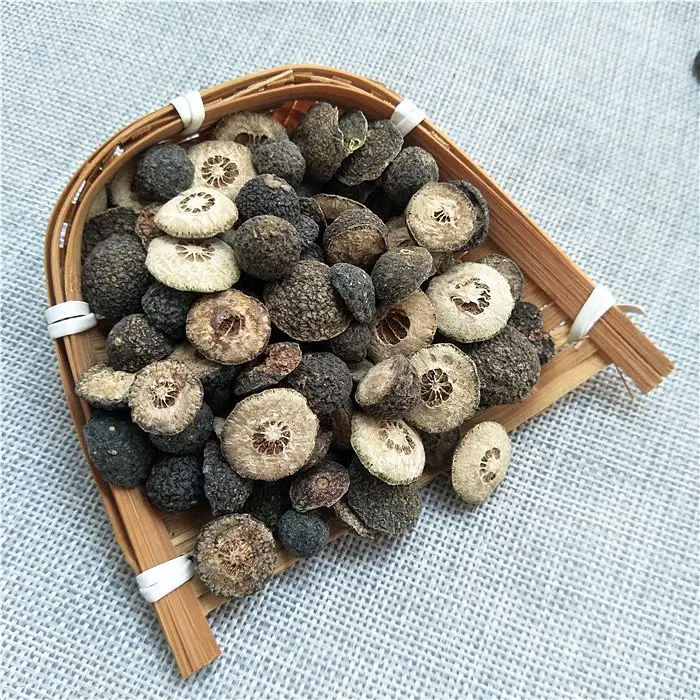


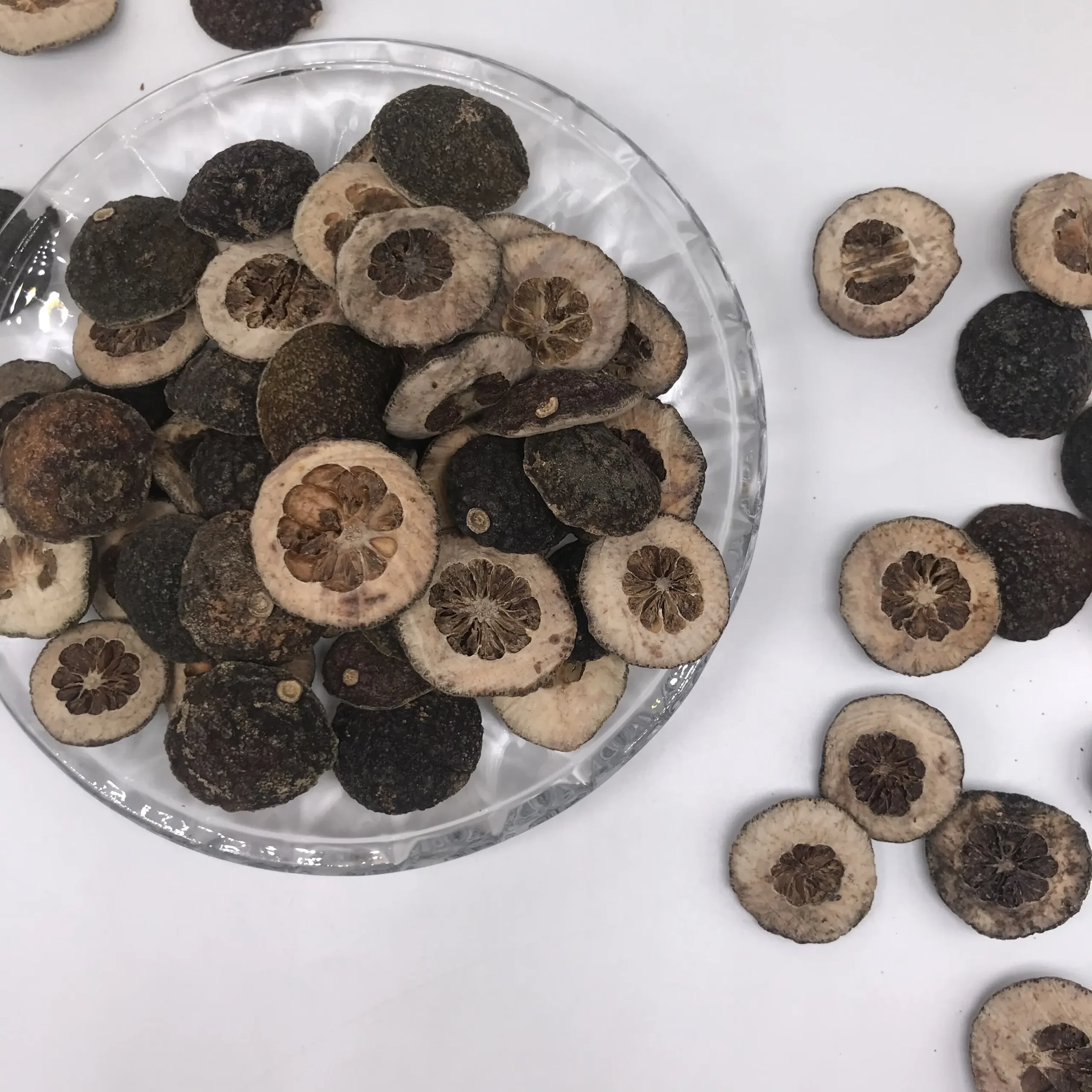

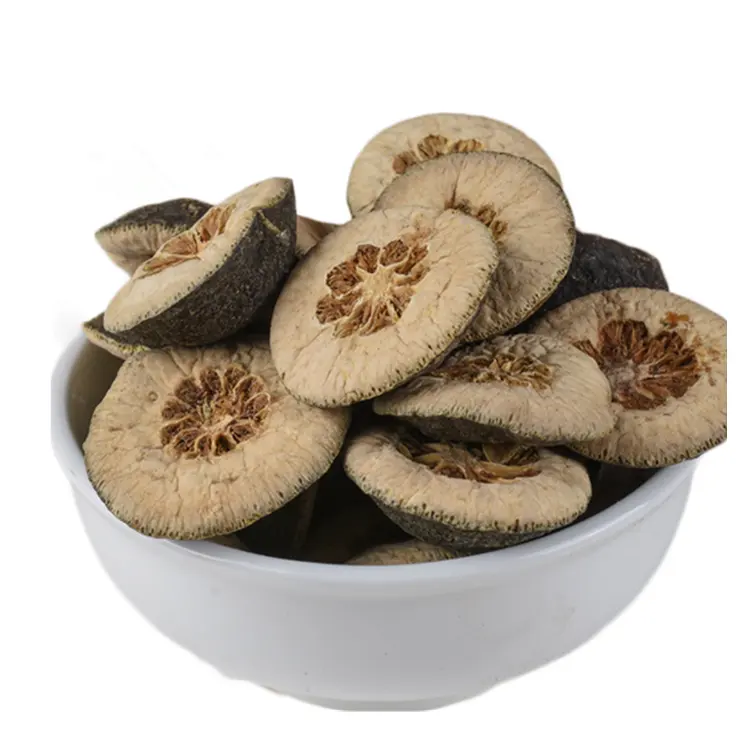



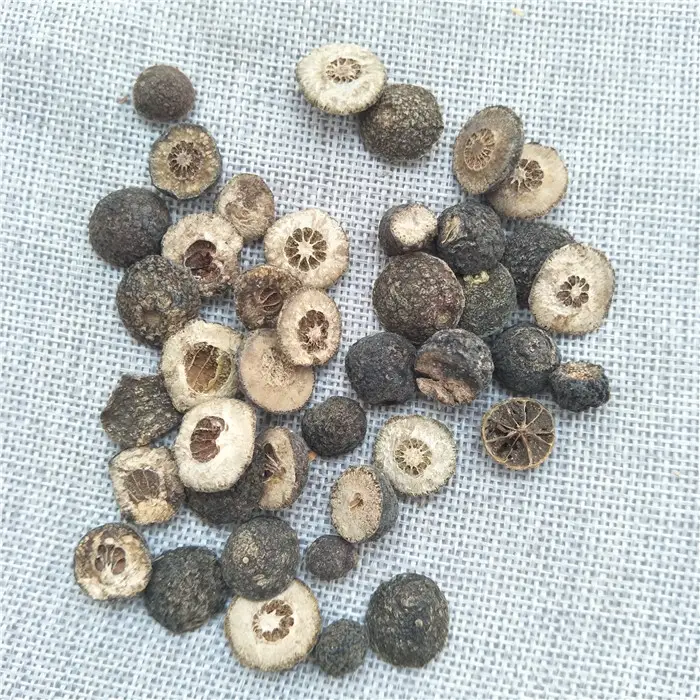
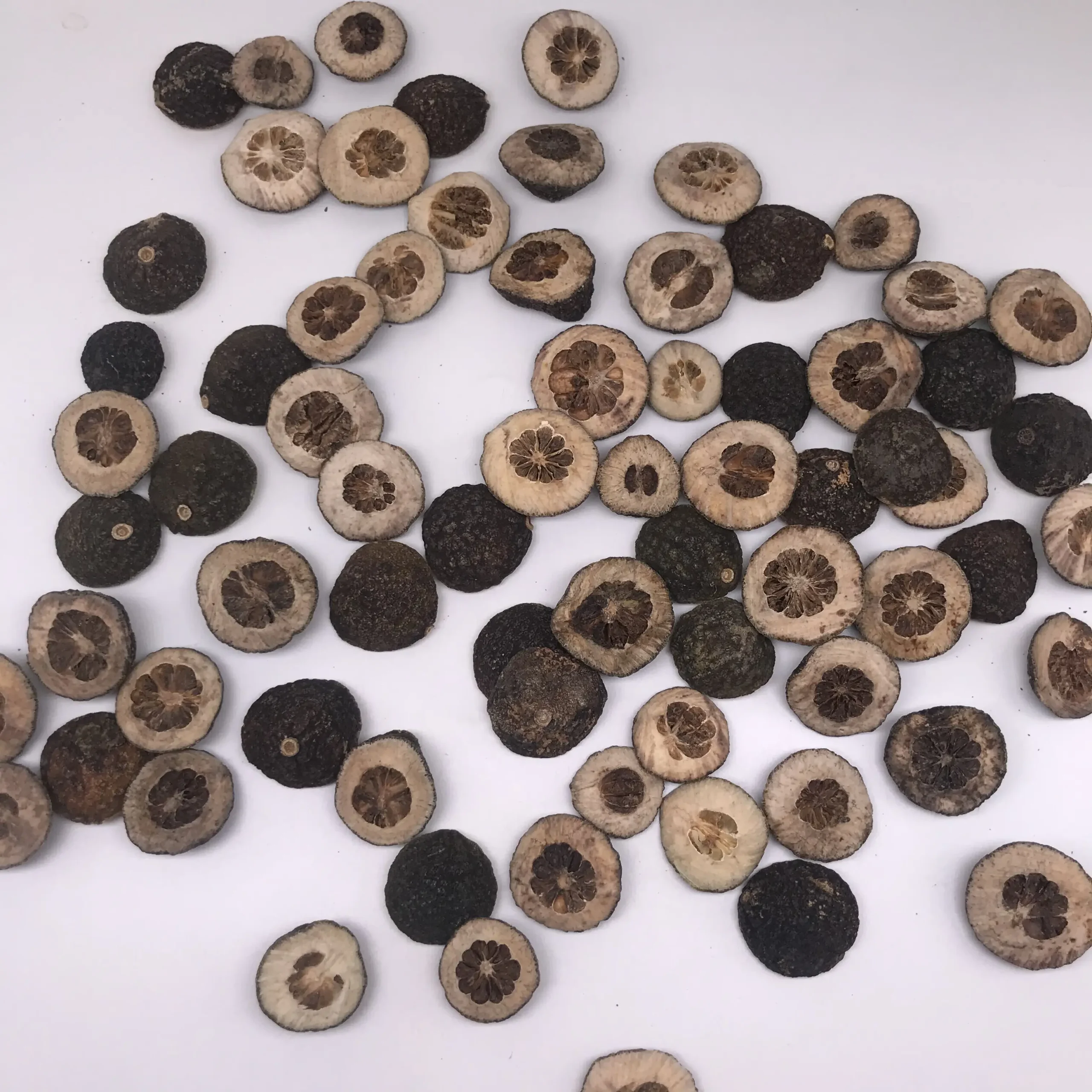
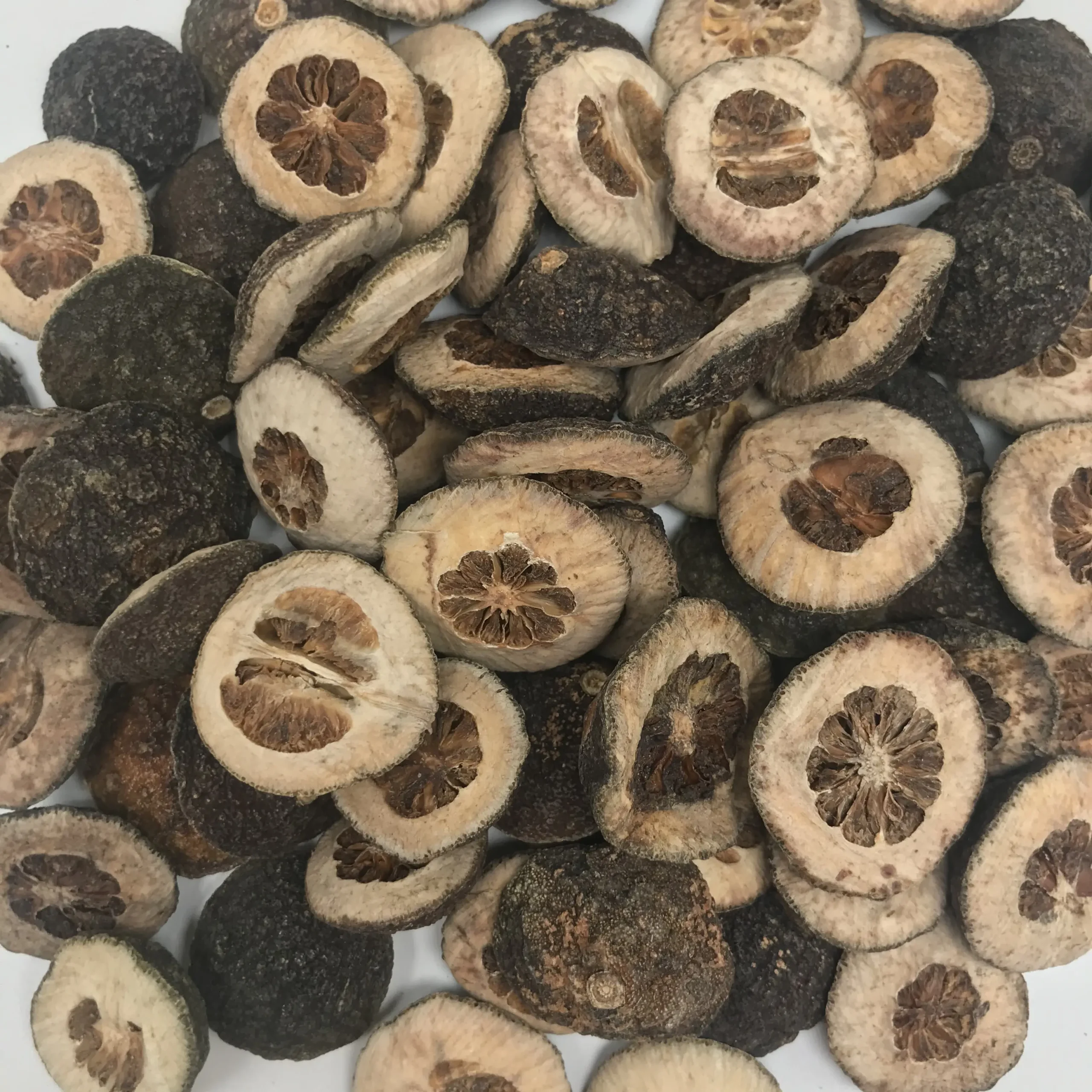
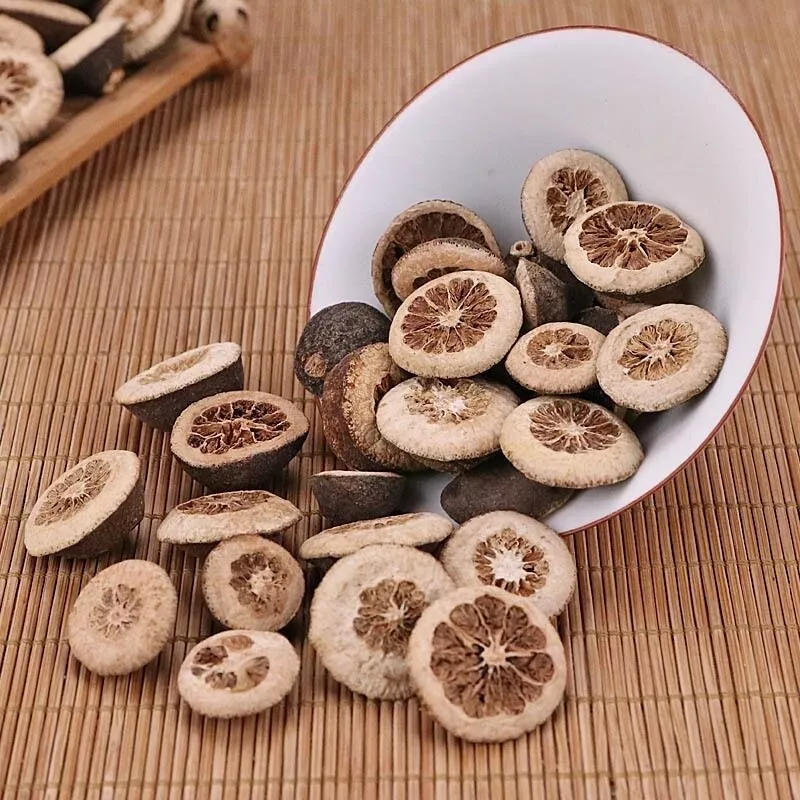
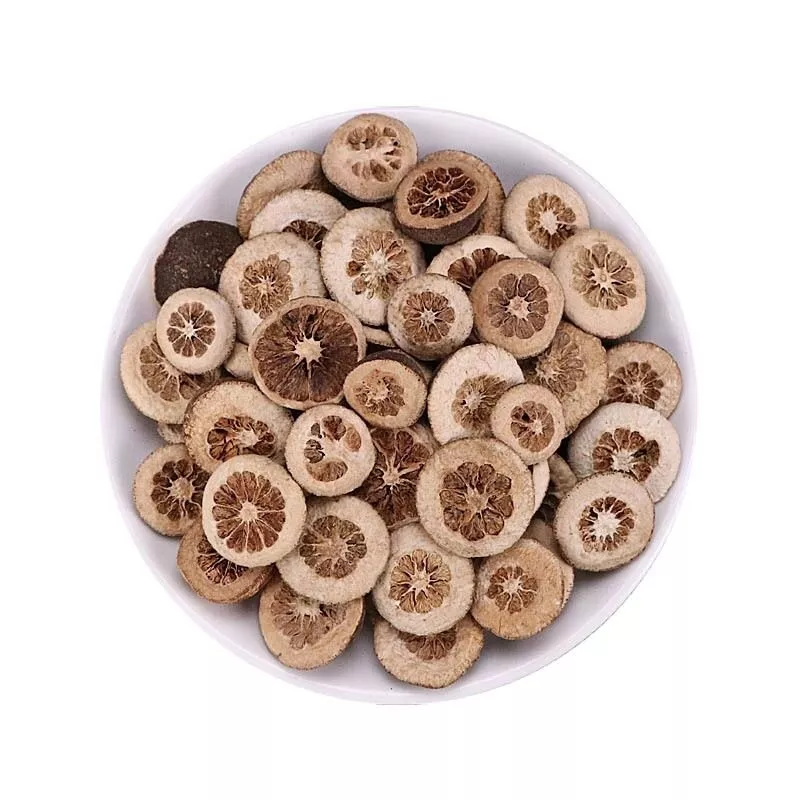


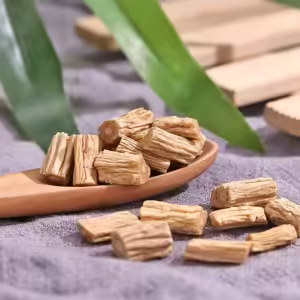
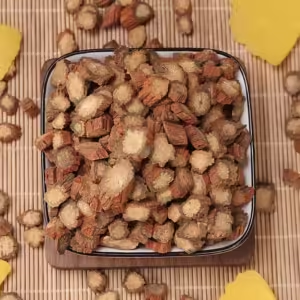
Değerlendirmeler
Henüz değerlendirme yapılmadı.